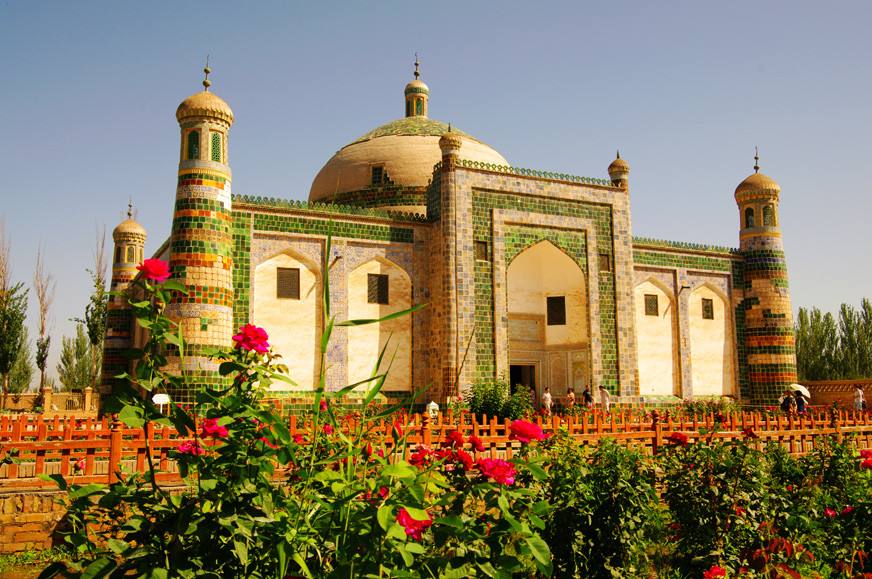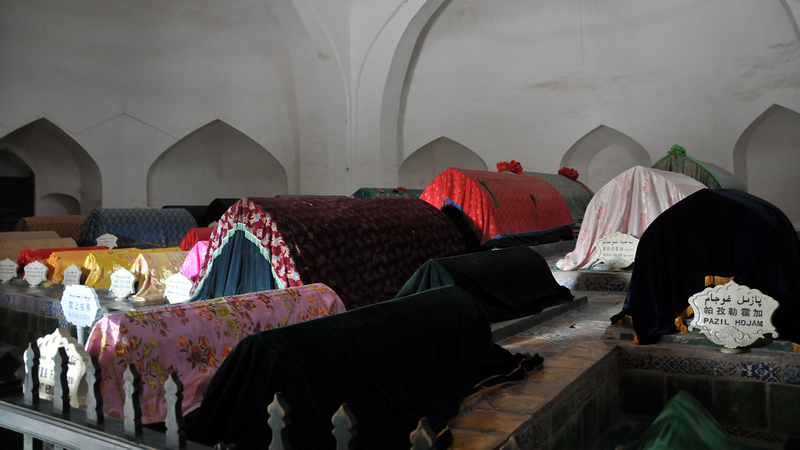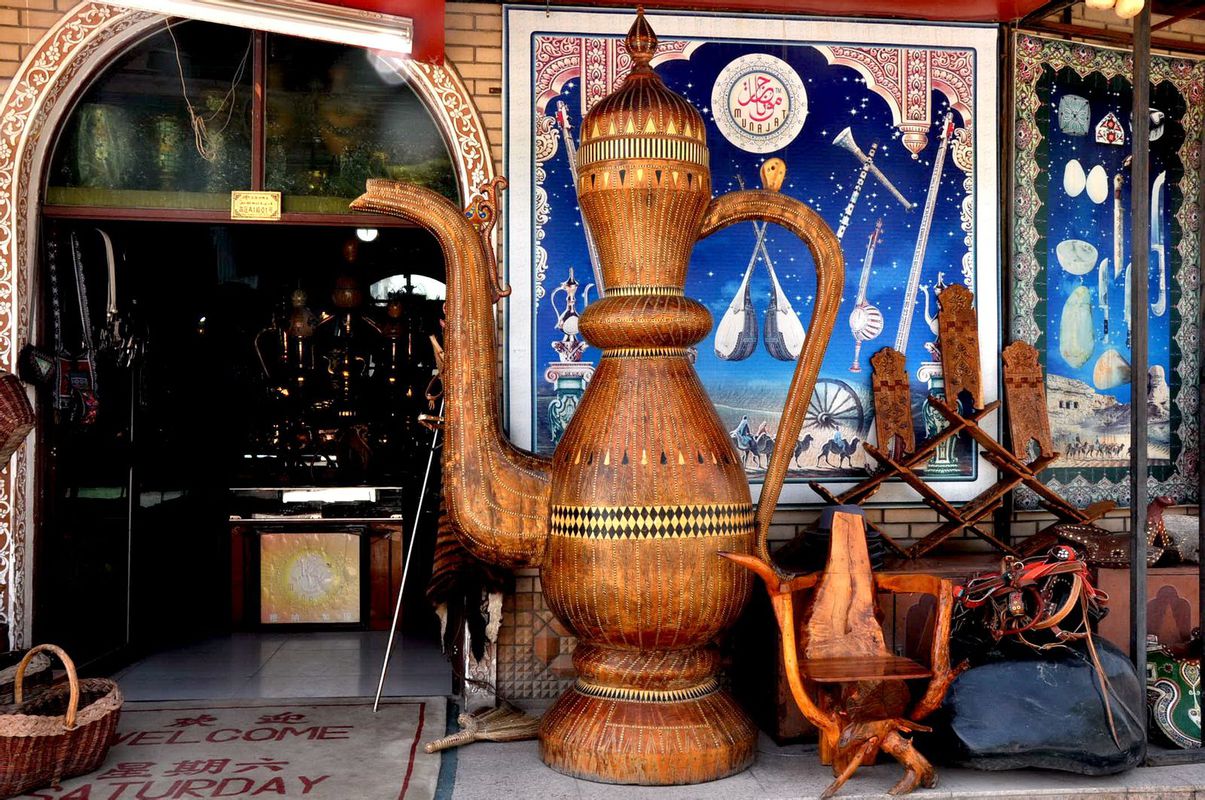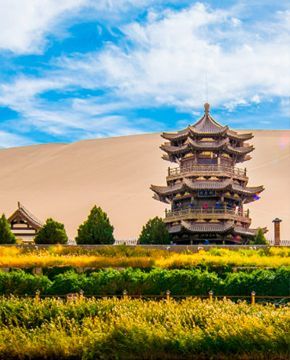
Located in Aizirete township, Naizerbag village 5km northeast of Kashgar City, the Apak Hoja Mausoleum is the largest and most influential Islamic burial place in Xinjiang and a key cultural relic unit under the protection of the Autonomous Region. As a Mausoleum of the descendants of an Islamic sage, it was built around 1640 AD. It is said that altogether seventy-two persons of five generations of the same family were buried in the Mausoleum. The first generation buried here was Yusup Hoja, a celebrated Islam missionary. After he died, his oldest son Apak Hoja carried on the missionary work and became the chief of the Aktaglik Sect of Islam during the seventeenth century. Apak Hoja died in 1693 and was buried in the tomb. He had a reputation much more well-known than his father's. so the tomb was called “Apak Hoja Tomb” by people after his times.

The Mausoleum consists of a group of beautiful and magnificent buildings including the Tomb Hall, the Doctrine-Teaching Hall, the Great Hall of Prayer, the gate tower, a pond and orchard. The main gate is not big but magnificent. On its two sides are tall and big brick columns and gate wall, the surface of which are inlaid with blue glazed bricks with white flower patterns. Stepping into the gate, a small mosque connecting the west wall can be seen, in front of which is a high platform with Uyghur style flower-covered ceilings, worth a careful examine. Behind the platform is a preaching hall to accommodate the daily preaching service of the nearby Muslims. The gate and the small mosque can be regarded as an integrated architectural complex. The main rectangle chamber is 35 meters wide and 29 meters high. On its four sides is respectively a half-embedded column which is wide at bottom and thin on the top. In the middle top of the chamber is an enormous hemispheric dome, with a diameter of 17 meters. The tomb maintains rich Islamic and traditional Uygur architectural style.

A legend goes that one of the descendants of Apak Hoja buried here was a lady named Yiparhan, who was one of the concubines of the Emperor Qianlong of the Qing Dynasty. Because of the rich delicate fragrance of flower sent forth by her body, she was called Xiangfei (Fragrant Imperial Concubine). After her death, Qianlong ordered 124 people to lift the coffin, spent 3 and a half year to send the remains back to Kashgar her homeland and buried in Apakhoja (fragrant princess' tomb) in Kashgar. Now there is a camel sedan-chair which is said to be the sedan in which the remains of the Fragrant Concubine were brought to Kashgar from Beijing. However, according to textual research, Xiangfei was none other than Rongfei, a concubine of Emperor Qianlong, and she was actually buried in the East Tombs of the Qing Dynasty in Zunhua County when she was dead in 1788 at the age of 55, Hebei province after she died.



